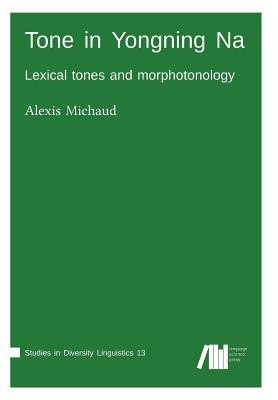
- We will send in 10–14 business days.
- Author: Alexis Michaud
- Publisher: Language Science Press
- ISBN-10: 3946234682
- ISBN-13: 9783946234685
- Format: 17 x 24.4 x 3.2 cm, minkšti viršeliai
- Language: English
- SAVE -10% with code: EXTRA
Reviews
Description
Yongning Na, also known as Mosuo, is a Sino-Tibetan language spoken in Southwest China. This book provides a description and analysis of its tone system, progressing from lexical tones towards morphotonology. Tonal changes permeate numerous aspects of the morphosyntax of Yongning Na. They are not the product of a small set of phonological rules, but of a host of rules that are restricted to specific morphosyntactic contexts. Rich morphotonological systems have been reported in this area of Sino-Tibetan, but book-length descriptions remain few. This study of an endangered language contributes to a better understanding of the diversity of prosodic systems in East Asia. The analysis is based on original fieldwork data (made available online), collected over the course of ten years, commencing in 2006.
EXTRA 10 % discount with code: EXTRA
The promotion ends in 22d.21:52:27
The discount code is valid when purchasing from 10 €. Discounts do not stack.
- Author: Alexis Michaud
- Publisher: Language Science Press
- ISBN-10: 3946234682
- ISBN-13: 9783946234685
- Format: 17 x 24.4 x 3.2 cm, minkšti viršeliai
- Language: English English
Yongning Na, also known as Mosuo, is a Sino-Tibetan language spoken in Southwest China. This book provides a description and analysis of its tone system, progressing from lexical tones towards morphotonology. Tonal changes permeate numerous aspects of the morphosyntax of Yongning Na. They are not the product of a small set of phonological rules, but of a host of rules that are restricted to specific morphosyntactic contexts. Rich morphotonological systems have been reported in this area of Sino-Tibetan, but book-length descriptions remain few. This study of an endangered language contributes to a better understanding of the diversity of prosodic systems in East Asia. The analysis is based on original fieldwork data (made available online), collected over the course of ten years, commencing in 2006.


Reviews